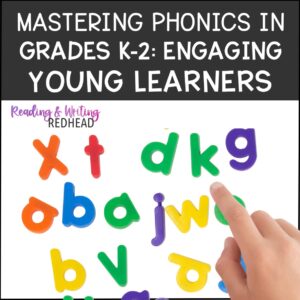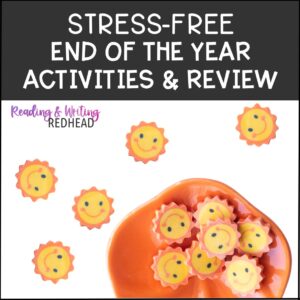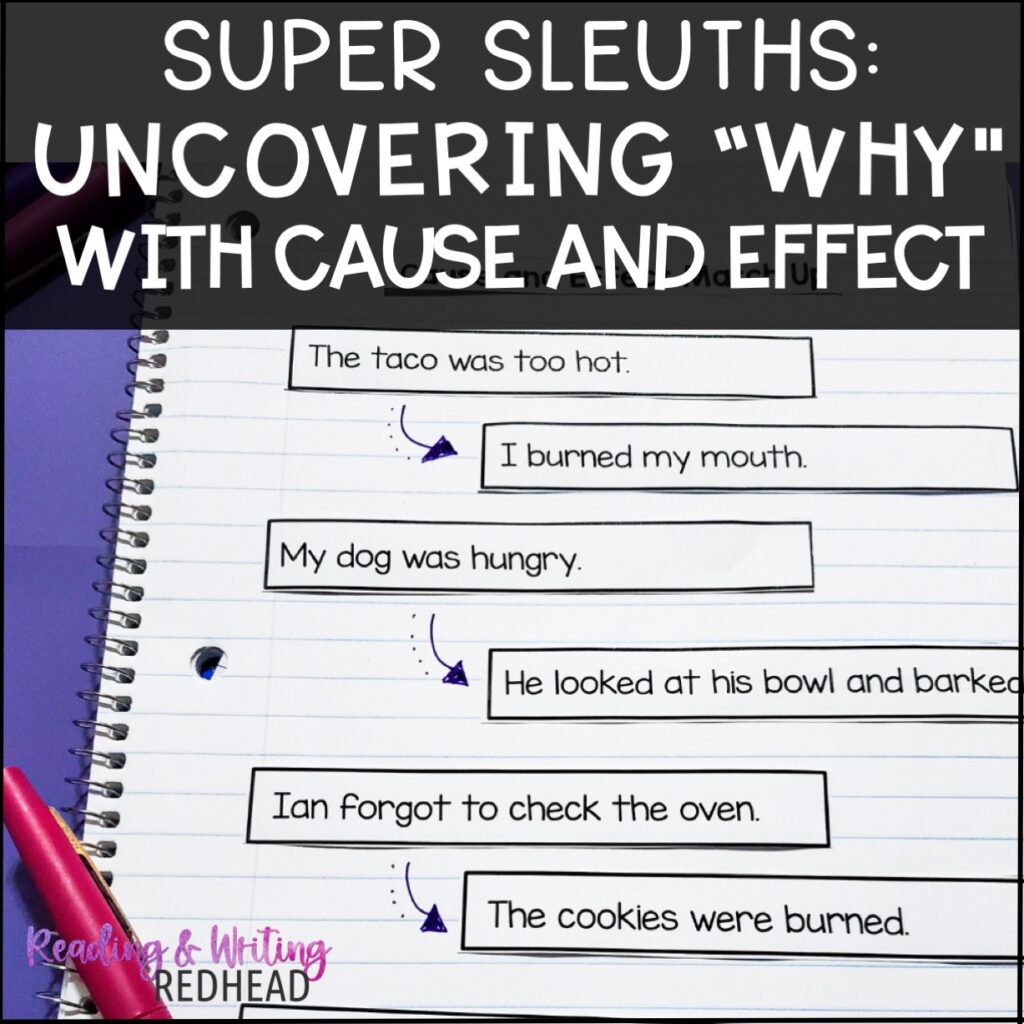
Super Sleuths! Uncovering “Why?” with Cause and Effect
Hey Super Teachers!
Kids are always asking “WHY?” That’s their brains working on something super important called cause and effect! Understanding cause and effect helps our young readers really understand their stories and the world around them.
Ready for some fun ways to make cause and effect, aka “why?” and “what happened next?” click for your students? Here are 7 awesome ideas!
Our Everyday “Whys”
Talk about things that happen every day! Ask your students simple “why” questions. For example:
- “If it rains, what might happen to the playground?” (It gets wet!)
- “If someone doesn’t eat their lunch, how might they feel later?” (Hungry!)
- “If we are kind to our friends, how might they feel?” (Happy!)
You can even use actual events that happened at school that day.
Story Chains for What Happened Next
After reading a story together, let’s make a chain of events! On strips of paper, have your students write down one thing that happened (the cause) and then what happened because of it (the effect). Then, they can tape or glue the strips together to make a long chain that shows the story’s events in order. They can keep adding more links as more things happen in the story!
Here are some great books for understanding causes and effect:
- A Bad Case of Stripes
- The Napping House
- The Case of the Vanishing Little Brown Bats (This one is a real story!)
Flip Flap Fun: Cause and Effect Books
Time to make flap books: Have your students draw or write a cause on one side of a page and what happened because of it (the effect) on the other side. When they flip the page, they can see the connection! They can draw pictures to help too. This is a great activity after they’ve practiced cause and effect a bit. Alternative: take a paper that is folded in half, write/draw the cause on the cover and then write or draw the effect on the inside. No template needed!
Matching Game: What Goes Together?
Let’s play a matching game! Write down some causes on one set of cards (maybe use blue cards) and their effects on another set of cards (maybe use yellow cards). Mix them up and have your students work together to find the cause that matches each effect. When they find a match, talk about why they go together!
Keep reading for more strategies!
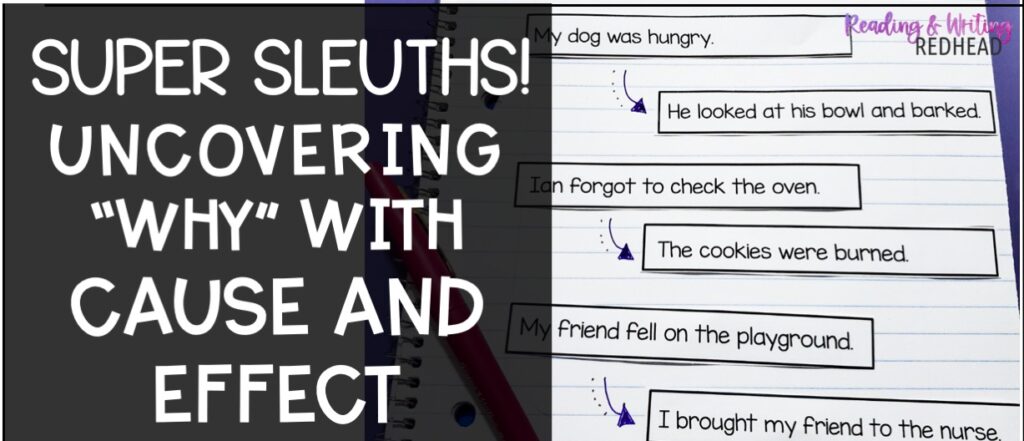
Cause and Effect Picture Match
Get some pictures ready! You can draw them, print them, or use clip art. Have some pictures show causes (like a watering can) and other pictures show effects (like a growing flower). Ask your students to match the picture that shows the cause with the picture that shows what happened because of it. Then, they can tell you why they matched them!
Being Good Neighbors: The Helping Game
Let’s learn about feelings and helping! Sometimes when someone feels a certain way (the cause), we can do something to help (the effect). For example, if a friend is sad because they fell down (cause), what could we do to help them feel better (effect)? This game helps us be good friends and learn about cause and effect in our own lives!

Ready-to-Go Activities from Teachers Pay Teachers!
Wouldn’t it be easier to have already made activities to help teach cause and effect? Well, let me help you with that. On Teachers Pay Teachers, check out my handy resource!
The resource includes games, worksheets, cut and paste matching activities, and more that will make learning about cause and effect super fun. You can use these with the whole class, in small groups, or even when students are working by themselves. And answer keys are included to make it easy for you!
These activities are great for second graders, but you can also use them to differentiate for 1st graders or 3rd graders.
Sneak Peek at the Fun!
Look at what you will find:
- Cut and Match: Students cut out causes and effects and glue them together on a paper or in a notebook.
- Go Fish or Memory: Use these cards with causes and effects to play fun games!
- No-Prep Pages: Sometimes you just need something quick! There are pages where students can choose the right cause or effect, fill in what happened, or match the cause to the effect.

These cards can be used to play a game like go fish or memory match up, or you can lead a lesson with a pocket chart to support students who need it.

And another example of no prep pages – just copy these and go. I like to have students check their answers with the answer key (I leave it in a folder at the teacher table or the rug) when they are done.

Plenty of no prep activities are included, with answer keys including these multiple choice pages. Great for sub days or a quick brush up of skills!
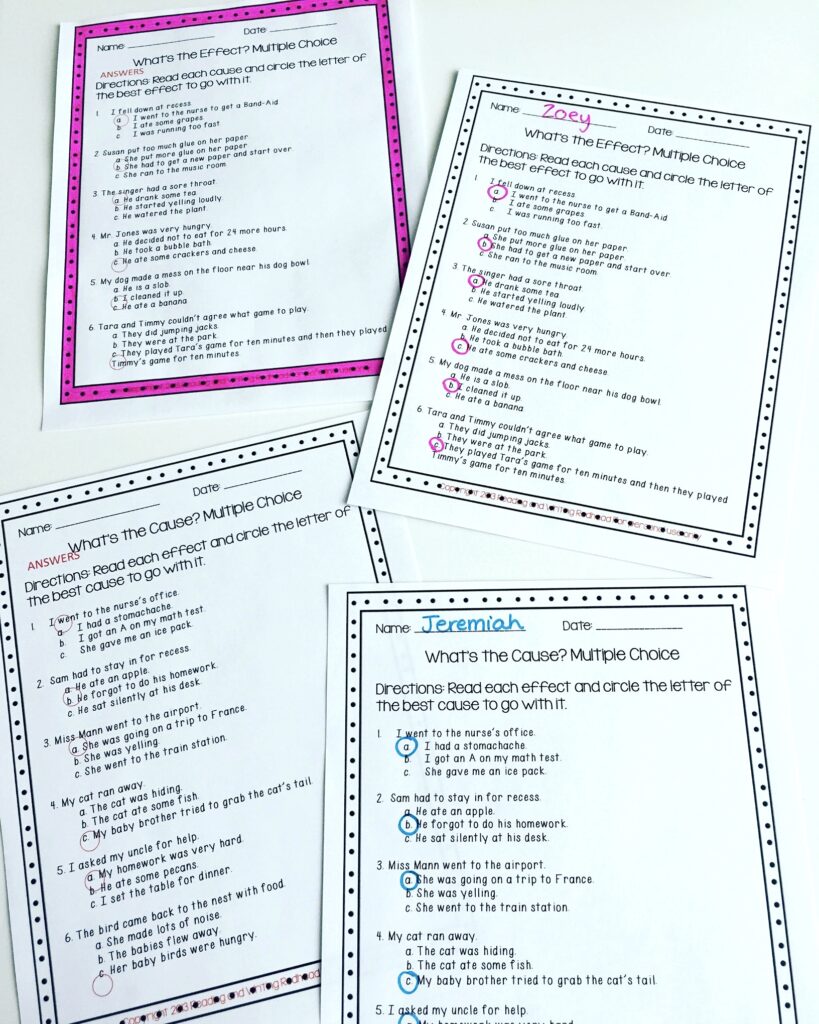
Even More Fun!
Check out these activities, which are from the More Cause and Effect Practice resource (If you want to save some money, you can even get a bundle with both cause and effect activities! You can save 33% when buying the two resources together!):
- Cut and Glue with Arrows: Students can cut out causes and effects and glue them in their notebooks, drawing arrows to show causes and effects.
- Pocket Chart Fun: You can use cards in a pocket chart to help students develop a better understanding.
- Fill in the Blank: Some pages have a cause and students write the effect, or they see the effect and write the cause!
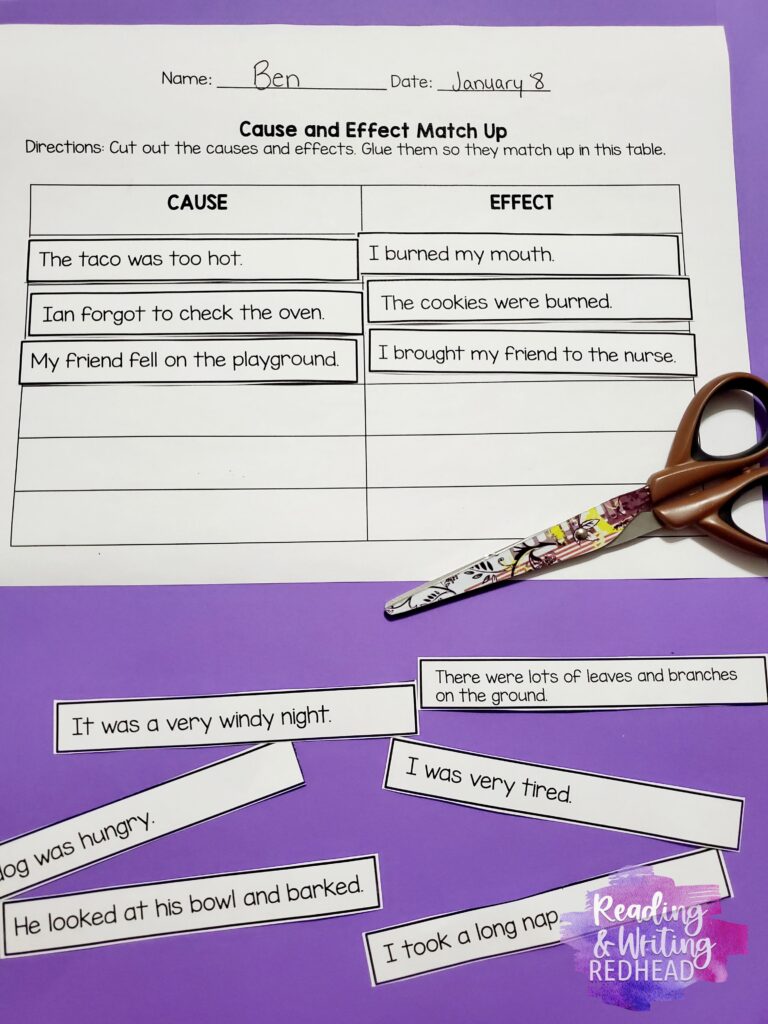
These cards are from the Cause and Effect game – great to play Go Fish style or you can use them for memory/concentration.

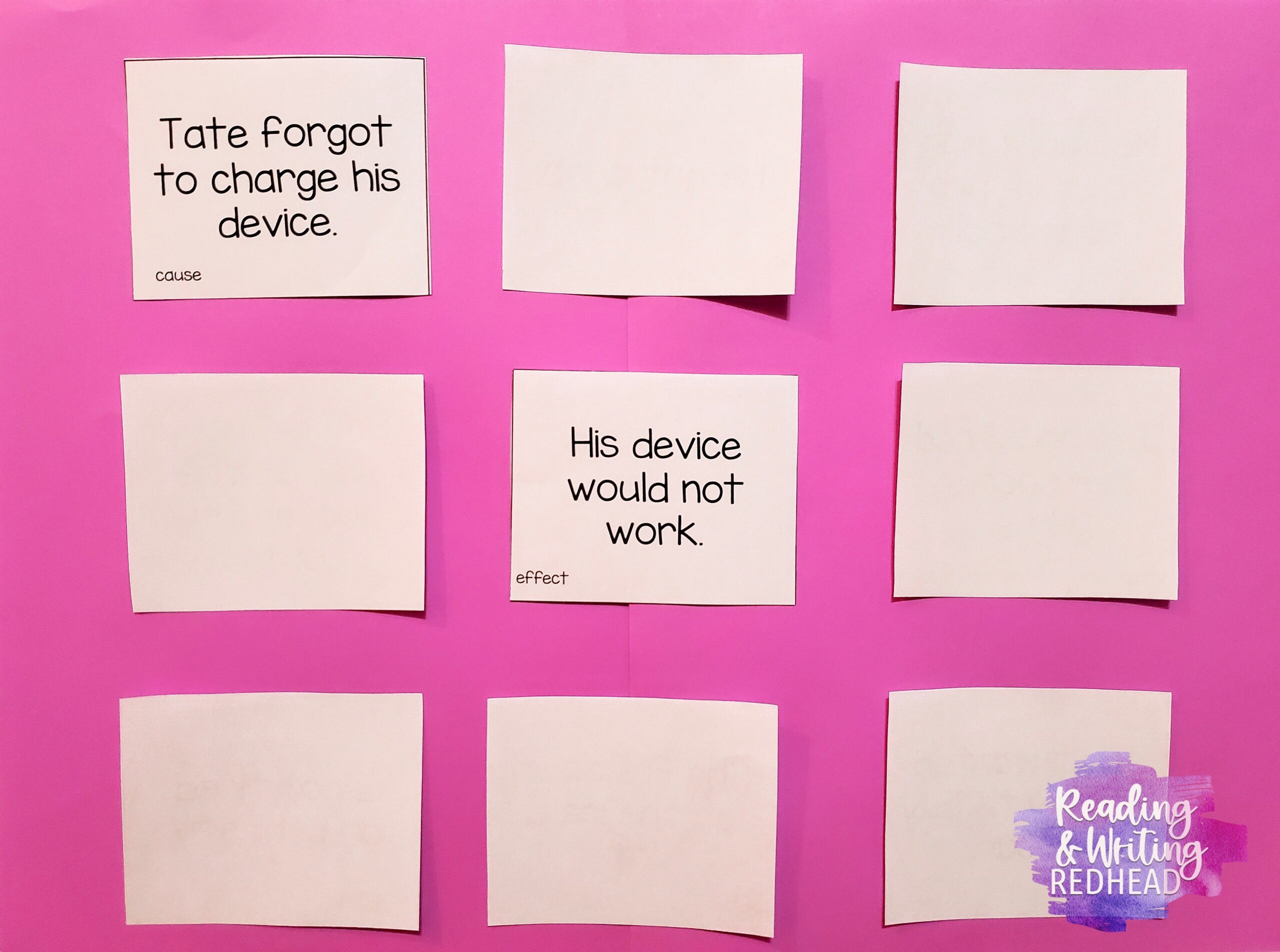
This is a fun alternative for the standard match up cut and glue – have students glue in a notebook and add arrows to show the cause and effect relationship.
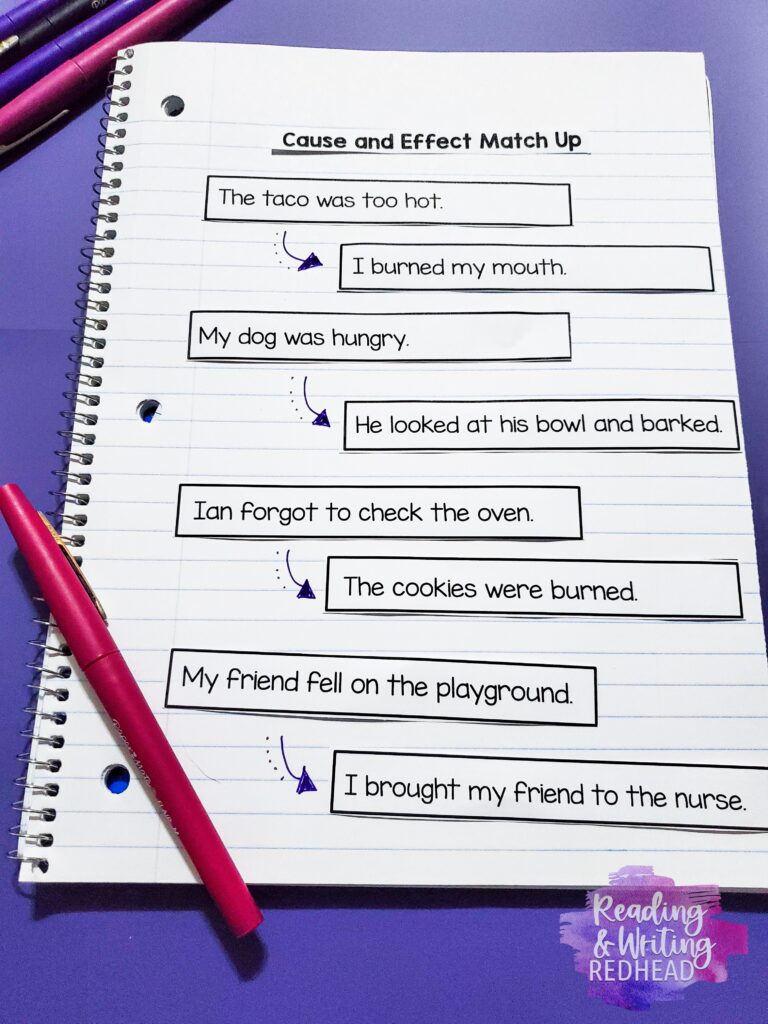
Plenty of no prep activities are included, with answer keys including multiple choice pages and these matching activities. Great for sub days or a quick brush up of skills!

These are a great open response option. You can get a good handle on your students’ thinking with this activity.

Ready to help your students become super cause and effect detectives? These activities will make a big difference!
For even more of a bang for your buck, consider the Cause and Effect Printable BUNDLE, which offers significant savings of 33%! This bundle includes all the printable resources you need to reinforce this important concept.
Ready to make a difference in your students’ comprehension? Grab this resource and watch their understanding of cause and effect soar!
Other blog posts you may want to check out:
- Science of Reading: Success with Phonics in Small Groups
- Phonological and Phonemic Awareness: Essential Skills for Young Readers
- Tips for Teaching Writing
- Capitalization Made Easy: Practical Strategies for Young Writers
If you want to save this blog post for later, pin this Pinterest ready image below!

Do you have any other fun ways to teach cause and effect? Share your ideas!


